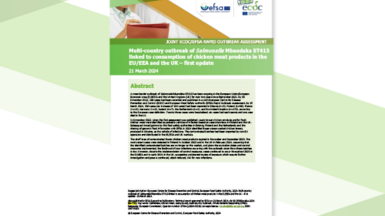Floods in Bosnia and Herzegovina, Croatia, and Serbia: communicable disease risks
The recent floods in Bosnia and Herzegovina, Croatia, and Serbia caused substantial damage. Recovery phase activities are ongoing (e.g. debris cleaning, disinfection, rodent control), in conjunction with post-disaster needs assessments in the affected areas. Following the floods, there is a risk of increased transmission of vector-borne infections to the populations, mainly of West Nile virus infection, and possibly dengue and chikungunya fever, if the virus is introduced through a viraemic visitor. The floods occurred more than a month ago, and the water levels are now returning to normal. Clean water and electricity are being restored in the affected areas. Therefore, there is only a limited risk of waterborne infections and zoonosis outbreaks in the coming weeks in connection with the floods. Outbreaks of vaccine-preventable diseases are unlikely thanks to high vaccination coverage, but in order to further minimise the risk, efforts should be made to resume disrupted routine immunisation programmes as soon as possible.
Executive summary
Following the floods that occurred more than a month ago in Bosnia and Herzegovina, Croatia and Serbia ECDC’s risk assessment concludes there is a risk of an increase in vector-borne diseases transmission, mainly West Nile fever, but that there is a low risk of outbreaks of waterborne infections, zoonosis and vaccine-preventable diseases. Further, no clusters or outbreaks of communicable diseases have been reported to WHO.
Considering the water levels are now returning to normal, clean water and electricity are being restored in the affected areas, there is only a limited risk of outbreaks of waterborne infections and zoonosis, e.g. leptospirosis, hepatitis A, diarrheal disease.
Outbreaks of vaccine-preventable diseases are also unlikely due to the high vaccination coverage in the affected countries. Vaccination coverage for diphtheria, tetanus and pertussis is high in the three countries, as well as for measles, tuberculosis and polio.
However, there is a risk of increased transmission of vector-borne infections, mainly West Nile virus infections, because the breeding sites for mosquitoes, vector of diseases, have expanded due to standing waters, states the assessment.
Options for prevention and response suggested in the risk assessment are related to vector-borne diseases and in line with the ECDC West Nile virus risk assessment tool, such as mosquito control, enhanced surveillance actions, promotion of personal protective measures.






